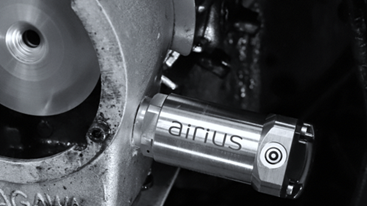About the Author
As an instructor at SPM Academy I train software & hardware to SPM personnel, resellers and directly to customers around the world.
Handheld measurement with portable instruments has been a cornerstone of predictive maintenance programs for many years. Portable instruments are often nearly – or equally – as powerful as online systems. They also add the benefit of flexibility, as you can measure without needing to install hardware first.
There are, however, some drawbacks to measurement with handheld instruments. One is the difficulty of performing the measurements with enough consistency in terms of signal quality. Another is that it requires considerable working hours. The latter may also be an increasing problem over time since the number of measuring points and measuring rounds is likely to grow as the plant and/or the CBM program expands.
Ideally, you would have online systems covering every possible measuring point in your plant or facility, but there are drawbacks here as well. The main one being cost; not only the cost of purchasing the system but also the costs relating to installation. There can also be some time before installation can take place, depending on accessibility to the machines or facilities.
Online systems are appropriate for monitoring the most critical machines where constant monitoring is crucial. In contrast, handheld systems are more suitable for less critical assets.
If routine measurements using handheld measurements need to be reduced or replaced, the wireless sensor is a great option. A wireless sensor is easy to install as it does not require cable installation. Furthermore, in many cases, there is no need to involve the IT department, as is almost always the case with more complex online systems.

Some wireless sensors require no additional hardware for communication purposes; instead, the sensor utilizes Wifi, which is already in place in most facilities. Use a smartphone or tablet to set the sensor up via Bluetooth, then connect it to Wifi, and it is all set to go. The measuring results are accessible from the same system as the readings from your online and handheld systems. An added benefit is the more frequent measurement results compared to the weekly, monthly, or even quarterly, readings usually taken with handheld instruments.
Fewer working hours spent on routine, manual data collection from machines in good condition means that engineers can devote more time to analyzing readings from equipment that show actual signs of potential problems. Putting in the work where it is most useful enables more well-founded maintenance decisions.
In summary, when compared to handheld measurements, wireless sensors enable more frequent measurements while allowing personnel to spend less time on data acquisition, but without adding complexity.
As an instructor at SPM Academy I train software & hardware to SPM personnel, resellers and directly to customers around the world.